Dabbling in Magic: How to Write Fantasy with Dabble (Guide + Template!)

Writing a fantasy novel is a grand adventure. It means worldbuilding to an unparalleled level, crafting your own magic system, creating relatable heroes and villains, and writing prose so captivating that it keeps your reader hooked for potentially hundreds of thousands of words.
And just as Percy Jackson has his transforming pen, Riptide, and Bilbo Baggins has his blade, Sting, you need your own magical tool to accompany you on your quest.
That’s where Dabble comes in.
As someone who has used Dabble to write my own fantasy novels and after writing a heck of a lot of articles for DabbleU, I know it’s a platform any author can use to write in any genre and their book will be better for it.
But boy, does it feel like a magical platform made for us speculative fiction authors.
Seriously, need a place to craft a new world? Got it.
Plot some epic quests? Done.
Assemble the party of complex characters? You know it.
And, now that you’re here, I’m going to show you how to do it all. That includes:
- The advantages Dabble brings to the table
- Getting started with Dabble
- Worldbuilding with your new favorite writing tool
- Crafting fantastic characters
- Plotting and subplotting in Dabble
- Some tips and tricks to make fantasy writing easier for Dabblers
For this guide, I've gone ahead and made you a template to follow along with and use in your own writing. You can click here to download that magical item.
If you aren’t already part of the greatest group of writers on the planet, don’t fret. You can also click here to grab your free trial of Dabble, no strings attached or credit card required, so you can follow along with this guide.
Now let’s get going on our adventure.
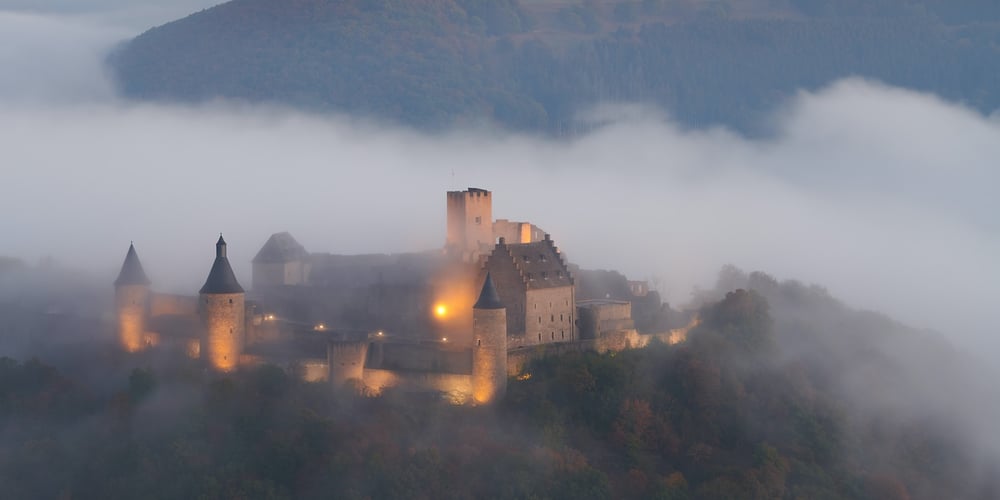
Why Dabble is Great for Fantasy Novels
Like I mentioned before, I used Dabble to write my own fantasy novels long before I started writing for DabbleU—and there are countless reasons why. Well, not countless, actually, because I’m going to list off the main reasons why Dabble is great for fantasy novels and authors of fantasy books.
We’re going to venture into the deepest depths of what Dabble has to offer throughout this article, but here’s a high-level overview of what this platform brings to the table for all fantasy writers and authors.
Worldbuilding
Dabble gives you a ton of resources and space to create your very own fantasy kingdom, world, or even universe. Here are some of the things you can look forward to.
Convenient access to all your notes - Everything in Dabble is just a click away from your manuscript. Forget the name of some obscure flora that only exists in the labyrinthine underground city? No worries.
Easy organization - No matter how expansive your notes and creations are, every Story Note and folder in Dabble can be easily organized by dragging and dropping.
Customize to your heart’s content - Take that expansive world and make as many subfolders as you want. Seriously, you could have subfolders within subfolders within subfolders. No, it’s not a problem; it’s called immersion.
Easy navigation via linking - Once your world gets to be a certain size, you might start getting lost in all your settings, magic spells, and ancient myths. Luckily, you can link any Note, Scene, or Chapter to a Note Card by typing @ and choosing or typing the name of the location you want to link to.
1,000 words at once - You can upload images into basically any place you can have text in Dabble, or you can use the built-in image search, powered by Unsplash, to find something that inspires your worldbuilding.
Character Development
With Dabble’s most recent update, its already powerful suite of character development tools leveled up. Now you have more options than ever to create memorable characters.
Assemble the party - You can organize your characters into Casts for easy reference. Whether you have a Fellowship-esque party of adventurers, a group of fictional evildoers under a “villain” cast, or want to enhance your worldbuilding by grouping people based on geographical location, you have options.
Flesh out your characters - You can create Character Profiles for each of your fantasy people, complete with header images, portraits, and all the details you could want. Don’t ever mess up a character’s eye color, sword fighting style, or repertoire of magic items ever again.
Track their journeys - Using the versatile Plot Grid and Labels, it’s easy to not only craft powerful character arcs but check them at a glance to make sure things are on track (and you don’t forget about that secondary character from act one).

Plotting and Subplotting
One of the best parts of writing and reading fantasy fiction is the epic adventures your characters go on. And I don’t just mean the main story but all the side quests and dazzling romps your story entails.
All your quests at a glance - I mentioned the Plot Grid a few lines up (and I’ll mention it a lot more later on), but this incredibly powerful, intuitive tool lets you track every single one of your storylines in one place that makes it easy to see how things intersect with each of your scenes.
Your story your way - If you’re a fan of story structures (and, spoiler, you’re using one even if you don’t know it), you can set Dabble up to meet your own needs. That means you can go uber-plotter and use the Snowflake Method or stick to high-level outlining with something as simple as the three-act structure.
Don’t forget the loot - Or relationships, small details, key moments, red herrings, etc. With Note Cards, you can attach any detail you want to any Scene, ensuring you don’t forget to add those important elements after your spark of inspiration ten chapters ago.
Writing Help
Dabble also brings goal tracking, commenting, timers, co-authoring, revision help, auto-syncing, dark mode, and a heck of a lot more.
Don’t worry, I’ll point out the ones that will benefit your fantasy adventure the most before we’re done. Just know that you have a dragon’s hoard of tools available to you, but only when you need them. Otherwise, they’re neatly tucked away so you aren’t distracted.
If the call to adventure has you hooked, let’s start writing your epic tome with Dabble.
Getting Started with Dabble
If you didn’t open it before, I strongly recommend clicking here to get the sweet Dabble fantasy template I painstakingly crafted for your journey. Seriously, I had to steal that thing from a necromancer’s lair, and that was just the beginning.
If you use that, you can skip to the next section of this little bit of onboarding: Plan Your Journey.
But if you would rather see how the sausage is made, to be in the room where it happens (as the kids say, if you know, you know), here’s how you start up a brand new Dabble project.
When you first open Dabble, you’re greeted with the home page and a quote about writing to inspire you. Once that quote fades away, click the plus sign in the empty rectangle to create a new project.
This will pop you into a new novel where you can enter your manuscript’s title, subtitle (I throw my series and book number in here), and your author name on the title page. You can also click or tap on Project Settings to fill out this information.
Filling out the title page will auto-populate the info in Project Settings, but you can also check out some other information like formatting, language settings, inviting a co-author, and name your project in there if you're writing more than one book in a series.
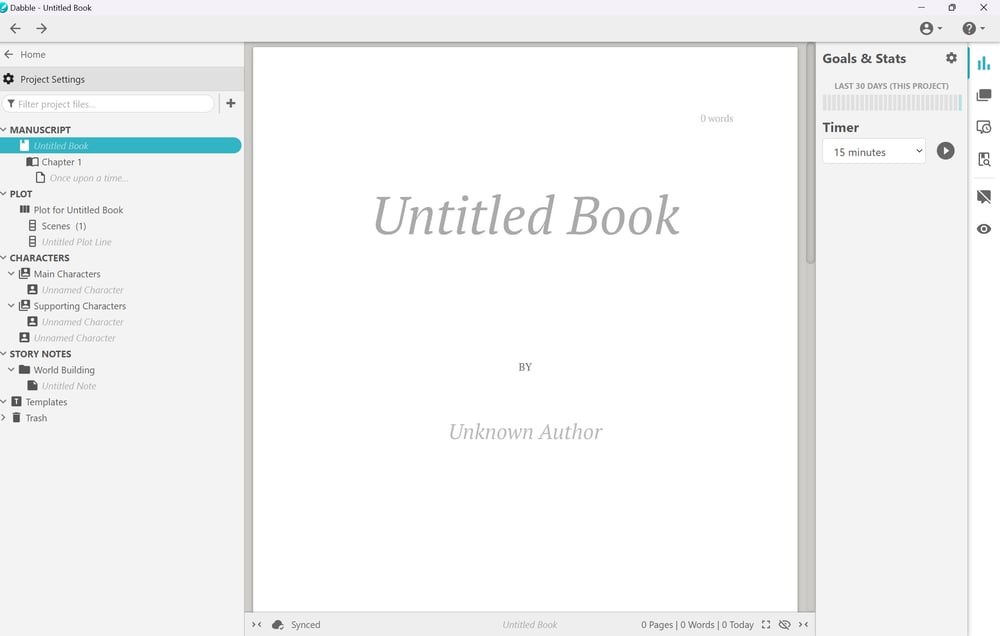
Plan Your Journey: Set an Initial Goal
Next, it’s a good idea to have some sort of destination to strive towards. To that end, I encourage you to set some sort of goal using Dabble’s goal-setting tools.
Click on the little cog next to Goals & Stats in the right navigation pane. This will open the Goal Settings. Here you have two options: a project goal and a daily goal.
Daily goals are just as they sound: a word count you want to write every day. This is a fantastic tool to help develop a writing habit, which is something we need if we want to write our epic tales. Daily goals also take all sources into account, meaning you get credit for planning and researching.
My advice? If you’re newer to writing fiction, start with a low daily goal, like 250 or 500 words and increase it as you write more regularly.
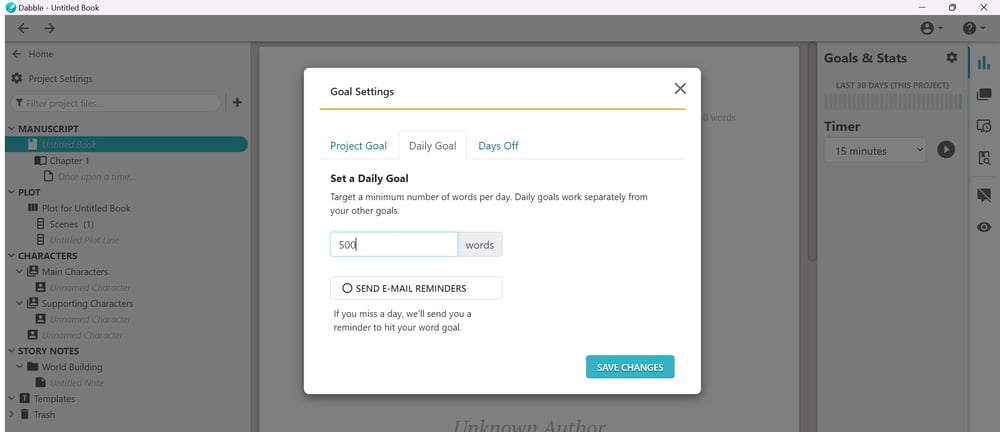
Project goals are all about reaching a certain word count within your project, manuscript, or book*. Choose your word source, enter a word count goal, pick a deadline, and add any number of words you don’t want to be counted, in case you already pasted something in.
*For reference, a project-level goal takes everything in your project into account, including Story Notes. A manuscript-level goal will look at all books within your project, which can be helpful if you’re working on multiple works in a series. A book-level goal just pulls from the chapters and scenes of a particular book. Book-level goals are the most common ones among Dabblers.
I know it can be tough to choose a word count goal right now. Most fantasy novels are over 100,000 words, so I’d say put that in as a starting point. It will give us a better idea of what we’re up against in this quest.

You can also check out the Days Off tab to choose specific days you know you won’t be writing. If you click or tap on a day of the week above the calendar (Monday-Sunday), it will book each of those days off for you.
We always suggest booking a handful of days off near your deadline to account for random days when some other adventure takes up your time.
Once you click or tap on Save Changes, Dabble will do its thing, crunch some numbers, and tell you how many words you need to write each day (except for days off) to reach your goal.
Not only is this another way for you to incorporate writing into your daily routine, but it gives us a true understanding of what our quest entails. Writing a fantasy novel is a big undertaking, bigger than almost any other genre save for the genre’s technological sister, science fiction.
If Dabble’s goal setting says you need to write 2,000 words per day to reach your goal by your deadline—a goal that might be less than what you actually end up writing—you know you need to revisit your deadline. Writing that many words per day isn’t feasible for most folks, especially if writing isn’t your primary income.
Play around with your deadline and word count goal if you want to see how it affects your daily target. Then, once you’re ready, let’s get into some fantasy-specific elements of Dabble.
Heroes and Villains: Setting Up Your Casts and Characters
No matter how many heroes, baddies, side characters, quest givers, mentors, historical legends, or any other people you include in your story, Dabble has a place where you can plan, manage, and develop all your characters.
If you’re using a fresh Dabble project, it comes with two preloaded casts. In Dabble, casts are groups of characters who share something in common. What that something can be is entirely up to you. In the default project, the casts are Main Characters and Supporting Characters.
On the other hand, if you’re a cool kid and using the fantasy template, you’ll see three different casts: Heroes, Villains, and Creatures. Why? Because most of your important characters fall somewhere in the hero or villain categories, and most fantasy novels have some sort of mythical, folklore-inspired, or supernatural beings.
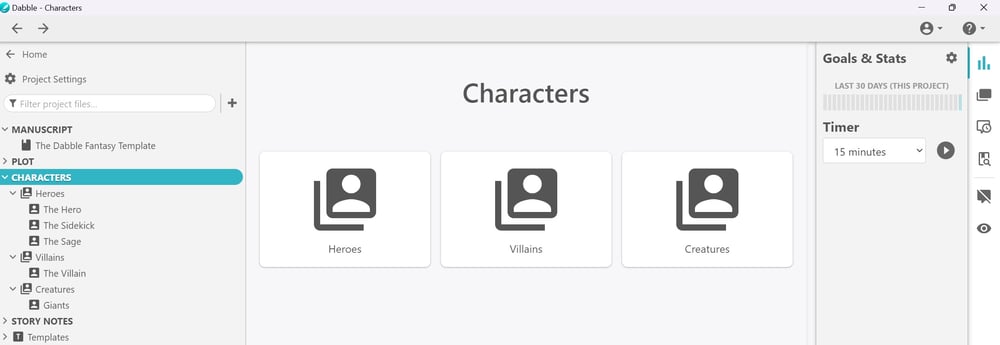
Don’t get me wrong, you can rename, delete, or add new casts to your heart’s content. Maybe you have one for each major guild in a city. Maybe you have one for politicians in different cities. Or maybe you categorize people based on their faith in your world.
Casts are meant to provide easy navigation in your worldbuilding and writing. You could skip them altogether and simply add new characters using the three dots next to Characters in the left navigation pane.
You will add more characters as you flesh out your world and write your fantasy story, so don’t feel pressured to add everything right now. However, there are some folks I suggest adding to get you started.
Important Characters in a Fantasy Novel
There aren’t a ton of characters you need to have in your fantasy epic, but there will inevitably be a ton of interesting characters that you will have. For the sake of setting up our Dabble project, I’d advise focusing on a few in particular.
The hero - This is your protagonist or your main character. They are the ones we’ll be spending most of our time following, who the readers will usually root for, and whose main goal and conflict follow the primary plot. If you’re using the fantasy template, I’ve already set up a character named The Hero with a blank version of our ultimate character profile for your convenience.

The villain - What is a good fantasy novel without a great villain? Whether your baddy is a grand evil looming in the distance (think Sauron) or an immediate and present threat acting against our hero (like Captain Barbossa), you want to make sure you spend time fleshing them out.
Party members and sidekicks - Frodo would be nothing without Sam, right? Nor would the story be the same without every member of the Fellowship. But nor would the stakes be so high without Saruman’s plotting. If you have some ideas for secondary characters, give them a spot in Dabble and fill out some tertiary information.
The same goes for any mythical fauna you already have in mind. Sure, you’ll fill more in later, and new characters will arise as you plan and write your fantasy story, but give yourself some ground to stand on and jot those early ideas down.
In that same line of thinking, don’t feel like you need to fill out every element of a character’s profile right now. If it doesn’t immediately come to mind, move on. We’re just getting ready for the good stuff, after all.
Speaking of the good stuff…
Play God: Set Up Your Worldbuilding Bible
I love worldbuilding. Like, if someone would pay me just to make unique, fictional worlds for them, I would die a happy man.
(And, I mean, if you are hiring for that, let me know.)
But it’s really easy for us crafters of fantasy worlds to get lost in the places we create or—on the other end of the spectrum—feel so overwhelmed that you don’t know where to start.
If you’re using a fresh Dabble project, you’ll have a folder titled “World Building” for you to customize however you want. If you are using the fantasy template, you’ll notice it already has a bunch of things set up for you.
I took everything from our worldbuilding bible and set it up for you already. If you want a complete guide on how to use it to its full potential, click here.

Here’s a breakdown of the different sections of the worldbuilding bible, with a brief description. I should preface it with a save-myself-from-angry-tweets statement like “You can add or remove folders as you see fit, in case there’s something you’ve thought of that’s not in the bible or there’s an element you need.”
Joke’s on the haters, though; I don’t have Twitter/X. Suckers.
Geography and environment - What does your world look like? This section of your bible maps out the physical world. This can include continents, countries, cities, landmarks, climate patterns, and natural resources.
Flora and fauna - Building off the geography, include detailed descriptions of the plants and animals that inhabit your world’s countries, especially if they are unique to your universe.
History - A detailed chronology of significant historical figures and events that have shaped the world and its societies. This provides a backdrop for the current events of your story. If you want to get intense (and I fully support this), you can create timelines of events to get a visual representation of your world’s history.
Cultures and societies - Who makes up your world? The people of your universe are governed by their landscape, but culture also affects where they live, explore, and exploit. This section can include information about various civilizations, their customs, languages, rituals, religions, economic systems, and social hierarchies.
Magic and/or technology - Depending on your genre, your world might have magic, advanced technology, or both. If your world has magic, how does it work? What are its rules and limitations? Similarly, describe the level and type of technology, how it evolved, and how it impacts daily life.
In this folder, I’ve also included a template for developing your own magic system based on our massive guide right here. I strongly suggest bookmarking that guide if you’re going to include magic in your world, though I’ve included brief notes in each step in the template.
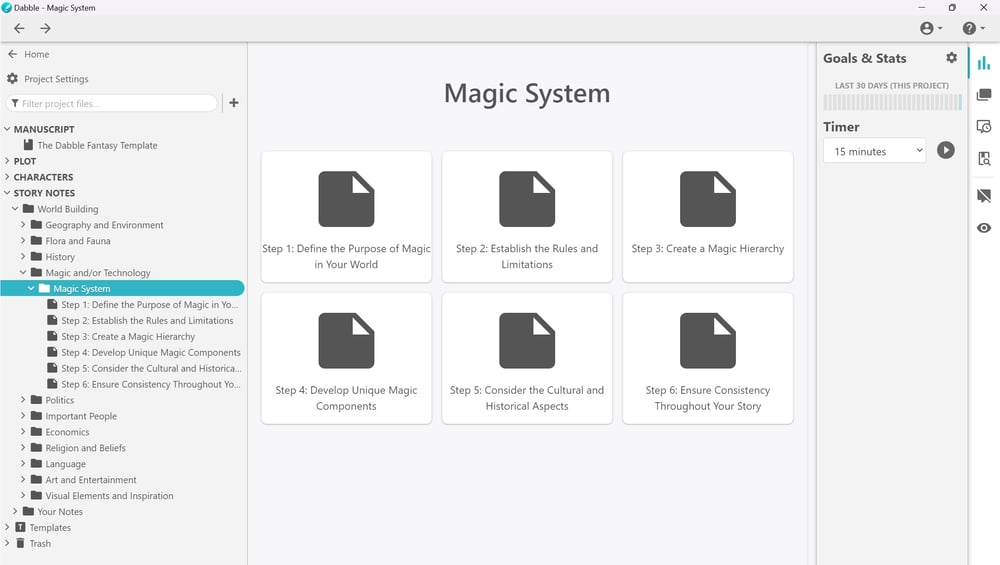
Politics - Outline the power structures, major political players, laws, and the mechanisms that hold societies together—or threaten to tear them apart.
Important people - You might want to include profiles for primary, secondary, and even tertiary characters. This is not just characters but can include physical descriptions, backgrounds, motivations, relationships, and arcs.
Economics - Here’s where you put all the information on the dominant currencies, major trades, resources, and the flow of goods and wealth. This will vary based on region, country, natural resources, transportation, etc.
Religion and beliefs - Have fun crafting details on belief systems, gods, rituals, creation myths, and the afterlife.
Languages - While not everyone goes as deep into language as Tolkien did with Elvish, many worldbuilders enjoy crafting languages or dialects for their cultures. And we even have a guide for it if you’re interested.
Art and entertainment - What do inhabitants of your world do for fun? What stories do they tell? What art do they create?
Visual elements and inspiration - While this can be included in any of the other sections, feel free to keep inspirational images, sketches of characters, artifacts, architecture, and maps you’ve made all close at hand. I’ve also included an infodump subfolder and initial note in case inspiration strikes and you just want to spew it somewhere.
Too graphic? That’s show biz, baby. Or worldbuilding, I guess.
We only have one more stop to make to set yourself up for writing fantasy brilliance in Dabble: the story itself.
Map the Quest: Outline Your Story
While it’s true that every great story has an excellent cast of memorable characters, it’s also true that the fantasy genre is defined by extraordinary tales. More than any other genre, you need a story worthy of your reader’s time.
After all, you’re inviting them into a detailed, intricate, imaginary world that is long. Especially if you’re writing a trilogy or expanded series, that could go upwards of one million words.
So, we need to make sure we’re writing an incredible, comprehensive story.
Luckily, Dabble has got your back on that. Say hello to the Plot Grid.
The Plot Grid is one of Dabble’s defining features. It is both a powerful and versatile tool that you can use however you see fit. Because fantasy plots and subplots intricately weave together, I’m approaching this from a plotter-skewed perspective, but the Plot Grid can help pantsers, too.
To give you a quick rundown of the Plot Grid, both a fresh Dabble project and the fantasy template come with a Plot Grid under the Plot section. Each Grid is connected to a book in your project and is laid out with a leftmost column titled Scenes and an unlimited number of columns to the right of that to fill out to your heart’s content.
Each card you add in the Scenes column is connected to an individual scene in your work: add a new one in the Plot Grid, and a corresponding one will appear in your manuscript. Alternatively, adding a new scene in your manuscript will populate a new card in the Plot Grid.
You can use this Plot Grid to track all your subplots, character arcs, mysteries, red herrings, or even dedicate a column to noting which perspective the scene is told from.
In the template, I’ve included the beats from the hero’s journey, a classic fantasy story structure, as well as a few examples of subplots and other things you might want to include in your outline. Play around with it, see how easy it is to use in your outlining, then delete it and add your own brand new Plot Grid to start outlining your own epic fantasy novel.

Because we’re getting to the good stuff now.
Worldbuilding in Fantasy Writing
Now that we’re set up for success, it’s time to use all the tools Dabble has to offer. And, because we’re writing in our own fantasy world, we’re going to start with worldbuilding.
To complicate matters, though, there’s no single way to begin your worldbuilding process. It’s really up to your own systems and the ideas you already have in your mind.
Maybe you already have a character in mind and want to flesh out the society they come from. Or perhaps there’s a really cool geographic feature you want to tackle first.
For the most part, I suggest taking a top-down, broader to narrower approach to worldbuilding. Think about the land and geography first, then start zeroing in on towns, cultures, religions, people, etc.
Here are a few ways Dabble can help you out through this process.
It’s an Iterative Process
Worldbuilding isn’t something you’ll start on a Friday and finish over the weekend. Your world will grow, change, shrink, and shuffle around as you’re planning and writing. With Dabble, you can access your entire worldbuilding bible from any device, so you’re ready when inspiration hits.
Connect Your Project
It’s already easy to navigate between different elements in Dabble—from manuscript to Plot Grid to character profiles to worldbuilding notes in just a click. But I love linking different notes from my worldbuilding bible to my planning. If I know a scene is going to take place in a specific location, involve a certain religion, or include a unique animal, I just type that @ and link to the document in my worldbuilding bible so I can jump there in an instant as I’m writing.

Mix and Match
Your worldbuilding bible doesn’t just need to be packed with a universe’s worth of text. Add images to help visualize what you want. Drag a character profile into your bible and fill out as much as you want for a historical figure. Use a generic plot grid to build a custom timeline and keep it handy in the right worldbuilding folder.
Make Your Own Templates
As much as I love the worldbuilding bible and magic system template that you now wield, the reality is that you can make Dabble work however you want. Find a process and layout that works best for you, and use it to bring your world to life.
Crafting Fantasy Characters
I don’t think I need to reiterate how important characters are by now, right? They’re the ones bringing your fantasy world and story to life, so we want to make sure you’re doing everything you can to make them perfect.
Don’t worry, we’ve got your back. In addition to a metric ton of character articles over at DabbleU—including one specifically for fantasy characters—I want to give you a few tips to make the best use of Dabble during your journey.
Go Big and Go Home
Which is my roundabout way of saying that you want to make your characters grandiose and relatable at the same time. Fantasy stories include some larger-than-life characters: giants, archmages, gods, eldritch beings, and more.
But that doesn’t mean they don’t need to be relatable. Use things like development interviews (which I’ve included in the fantasy template) to find the humanity in your fantasy characters.
Interweave Character Arcs
With such large stories, there are plenty of opportunities to weave the character arcs of your main and secondary characters together and into all the side quests they’ll be going on.
If you’re getting lost in all of these journeys, though, you can add individual arcs to the Plot Grid or create a generic grid for each character to organize your thoughts.

Tie Characters Into Your Larger World
Your world influences your characters in more than just a superficial way. As you build out your worldbuilding bible, consider how your characters would interact with the different things you come up with. Do they have a history with a particular gang? Long to see some far-off landmark? And don’t forget to think about how your characters influence their own world, too.
Plot Development in Fantasy Writing
The third element of the fantasy trifecta is your actual story. The epic quest. The journey there and back again. The race to save the world.
Whatever you call it, people are reading your fantasy story to go on an adventure.
If you want some advice on writing that tale, click here. And check out these ways Dabble can help develop your plot.
Focus on Conflicts
Stories are nothing without their conflicts. Seriously, the entire point of a “plot” is to tell us how characters overcame or succumbed to a big obstacle. When you flesh out your characters, you can ensure their internal conflict (what they’re struggling with) plays an important role in the external conflict (the big problem getting in the way of their goal).
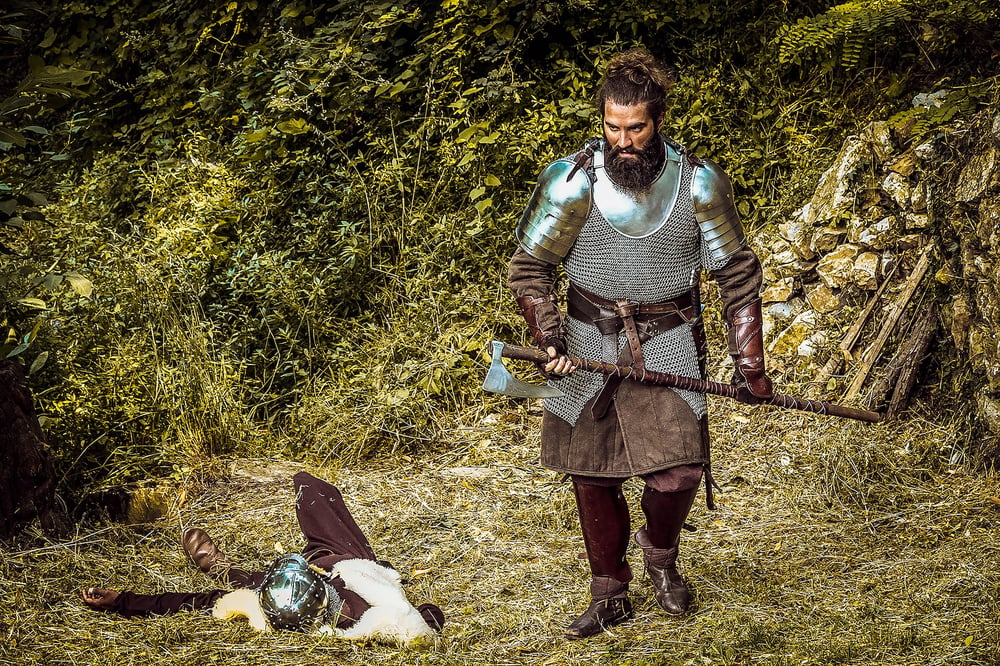
Don’t be Afraid of (Relevant) Subplots
Have I mentioned fantasy novels are big? You have a lot of room to explore your fictional world, but you should do it in a relevant way. Use subplots to immerse your fantasy readers while developing important characters. Just make sure a side quest still ties to the bigger story somehow.
Mind Your Pacing
With your vast cast of characters, intricate subplots, and sprawling world, it’s all too easy to meander your way off-course. It’s important to make sure you’re always pushing the story forward to keep your readers interested. Using Dabble’s Plot Grid can give you a bird’s-eye view of your story to make sure you aren’t wandering too much.
Using Dabble In Your Writing Process
So you know how Dabble works and the tools you can use to write your fantasy stories. What’s next?
Well, it’s time to bring those stories to life.
Luckily for us, Dabble can make every step of the writing process more efficient and, to be honest, more enjoyable. Here’s how we do just that.
Step One: Brainstorm
Any good story starts with dumping all the ideas in your head onto a piece of (digital) paper. Brainstorming takes the floating thoughts and concepts in your mind and starts making sense of them.
And it’s easy in Dabble. You can dump all your worldbuilding thoughts in your growing bible, jot down quick notes for character ideas in the Characters folder, and store any links or articles in a Brainstorming folder.
If you’re working with a co-author, you also want to add them to your Dabble project now.
Step Two: Set Your Goals
If you’ve been following along with this article, you did this a while ago. But if you’re starting fresh or just skipped down to this section, Now is when you want to set an initial goal.
At this point, you can either set a generic project goal (like 100,000 words) to help figure out what a realistic deadline is or you can set a daily goal that will encourage you to write and plan every day.
Always try to be objective about your goal setting, too. Here’s an article to help you out.

Step Three: Plan Your Fantasy Novel
This is where we want to establish some elements of your fantasy world, your characters, and your story outline. Use all the tools we’ve discussed in this article as much as you need to prepare yourself for success.
Unless you’re a hardcore plotter, you don’t need to spend weeks on this step. Set yourself a deadline to move on to writing, and establish what you need to get started.
Seriously, you’re going to be revisiting your outline, worldbuilding bible, and characters as you go, so don’t get hung up on thinking you need every single detail during this step.
Step Four: Write Your First Draft
Now for the part we all live for: writing your story.
Approach the first draft knowing that it won’t be your best. We’re writing a story now so we can perfect it later. Dwelling on every word or line will slow you down and spoil any creative momentum you’ve generated.
Aim for your daily project word count to stay on track. Writing a fantasy novel is a long process—for most authors, this will take months or even years. We’re going to aim for the former, though.
I’d also suggest using Dabble’s built-in writing sprint timer. Writing in short bursts, taking a break, and writing again is more effective than sitting down and staring at a screen for hours on end and hoping you write the entire time.
Some days will be easier than others, that’s a guarantee. But stick with it and your writing will become faster and qualitatively better.
Step Four Bonus: Update Your Source Material
As you work your way through your first draft, take some time every now and then to update your worldbuilding bible, Plot Grid, and character profiles. It’s much easier to maintain these source materials as you go than it is to do a massive update once your draft is done.
To be clear, this isn’t an excuse to interrupt a writing sprint. Don’t plug that creative flow if you don’t need to. Use the break in between sprints or take some time after a writing session to maintain your notes.

Step Five: Revise
Congrats! Once you reach this step, it means you’ve finished your first draft. Think about what that would feel like if you’ve never written a 100,000+ word fantasy book before… there are few feelings like it, I promise.
Unfortunately, it’s not the end of the road for your story. Next, you have to revise what you’ve written.
I personally like to take a break from my story before I start revising. A week or two usually does it—I’ve jumped from draft to revising immediately, and it’s exhausting.
Once you’ve taken your break, dive right into making your story better. We have a guide to revising for you, but here are some key highlights (and how Dabble can help).
Start by reading your story out loud. I used to be a hater when someone told me to do this, but you would be amazed at how much you miss when you only read your writing in your head. If you find yourself with a sore throat or tired of your own voice, Dabble has a built-in read-to-me feature with multiple voices to choose from.
As you’re going through your draft, Dabble has a handful of tools to make revising easier:
- Highlighting to mark problem areas for later. My pal Abi dedicates each color to a different issue (repetition, reworking needed, fact check, add specificity, etc.), which can be helpful for people more organized than me.
- Comments to leave more detailed notes for yourself about a specific section.
- Sticky notes to leave reminders for big-picture changes.
- ProWritingAid integration to check for spelling, grammar, and style errors. You can also use Grammarly’s browser extension if you prefer their system.
Revisions can take place over multiple rounds. Perhaps one readthrough is just to look out for plot holes and glaring issues, another focuses on character consistency, and a third looks for ways to improve your prose.
Some writers have a tendency to get stuck at this phase. If you dedicate rounds of revision to specific objectives, though, it’s harder to think “I can make it a little better.” Don’t get sucked into the revision trap, because we still have two more steps.
Step Six: Receive and Incorporate Outside Feedback
A potentially scary step, now is the time to get feedback from other people about your work. Depending on how many folks you want to involve and your budget, this could include critique partners, various types of editors, and beta readers.
I’d start with any critique partners you have. Get their feedback on the plot, pacing, character development, worldbuilding, and/or prose, if they’re willing to offer it. If they’re a Dabbler, you can even invite them as a co-author to leave feedback directly in your project.
Review their comments for important errors and any inconsistencies.
Next up, you might want to consider a developmental or structural editor. This kind of editing looks at your story as a whole. Does your plot make sense? Do you have relatable characters who are interesting? Should an entire chapter be removed or rewritten.
They are also the most expensive kind of editor because their work requires a lot of back and forth with you to workshop your story.
After that comes line editing, which is a style of editing focused on your sentences and word choice. Line editors help buff your writing style, remove repetitive or weak words, rearrange sentences, offer suggestions about what to add, and so on.
.jpeg)
If you hire a line editor, be prepared to spend a pretty penny, especially when your word count is six digits.
For developmental or line editors, you’ll want to export from Dabble to send them their preferred file type.
Once you’ve incorporated professional feedback, if your budget allows it, you want to get beta readers in on the game.
Unlike a critique partner who is likely another writer, beta readers are approaching your book from an audience perspective. We have a whole guide to working with beta readers right here.
Finally, you’ll want to hire a copy editor. This is the professional who does the editing work we’re most familiar with: finding spelling, grammar, punctuation, and other errors that you don’t want slipping through the cracks. Even if you’re sending your manuscript to an agent or publisher, you want it to be as professional as possible.
Step Zero: Start With Dabble
Look at me being as sneaky as a rogue and putting step zero after the last step.
Seriously, though, I’m not going to spend too much time at the end of this article talking about the benefits of Dabble because I hope you’ve seen the many tools and features throughout this article that can help you write a great fantasy novel or story.
If you’re already a Dabbler and haven’t grabbed it yet, here’s the link one more time to the fantasy template.
If you haven’t joined the guild yet, you can grab Dabble for two weeks, absolutely free, without entering any credit card information by clicking here.
You’ve heard the call to adventure, mighty writer. Now you just need to answer it.








